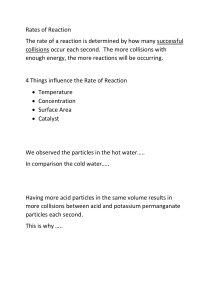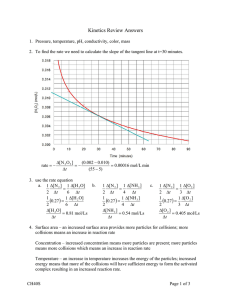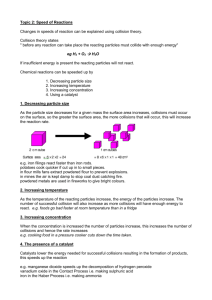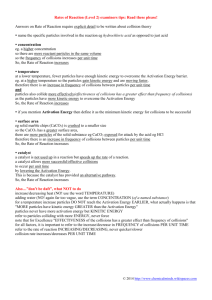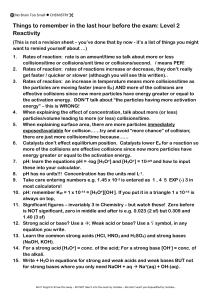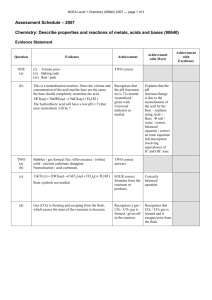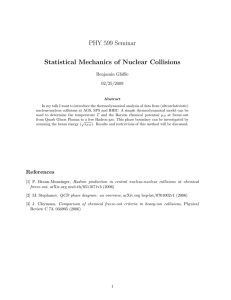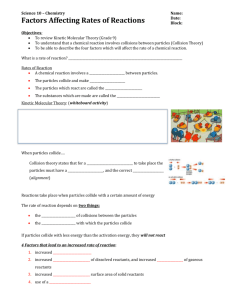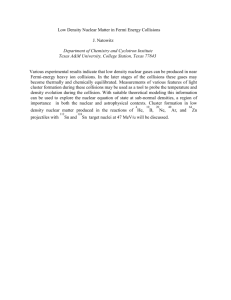Science - No Brain Too Small
advertisement
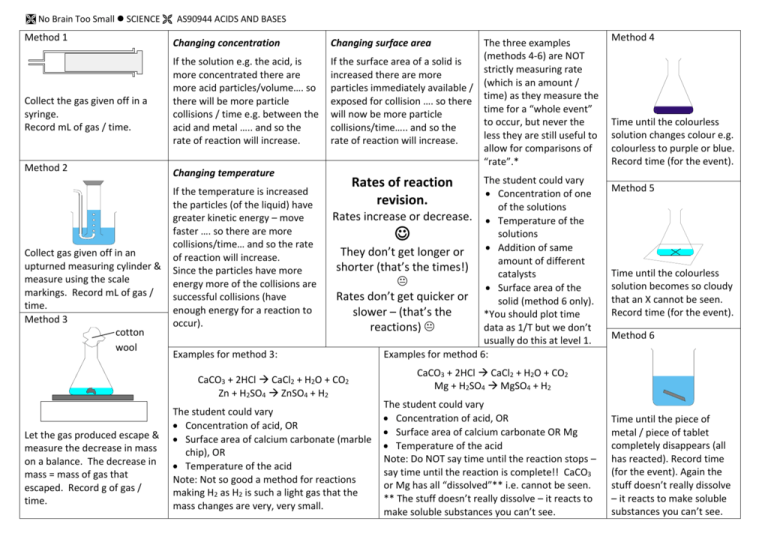
No Brain Too Small SCIENCE AS90944 ACIDS AND BASES Method 1 Collect the gas given off in a syringe. Record mL of gas / time. Method 2 Collect gas given off in an upturned measuring cylinder & measure using the scale markings. Record mL of gas / time. Method 3 cotton wool Changing concentration If the solution e.g. the acid, is more concentrated there are more acid particles/volume…. so there will be more particle collisions / time e.g. between the acid and metal ….. and so the rate of reaction will increase. Changing temperature If the temperature is increased the particles (of the liquid) have greater kinetic energy – move faster …. so there are more collisions/time… and so the rate of reaction will increase. Since the particles have more energy more of the collisions are successful collisions (have enough energy for a reaction to occur). Examples for method 3: Changing surface area The three examples (methods 4-6) are NOT If the surface area of a solid is strictly measuring rate increased there are more particles immediately available / (which is an amount / exposed for collision …. so there time) as they measure the time for a “whole event” will now be more particle to occur, but never the collisions/time….. and so the less they are still useful to rate of reaction will increase. allow for comparisons of “rate”.* The student could vary Concentration of one of the solutions Rates increase or decrease. Temperature of the solutions Addition of same They don’t get longer or amount of different shorter (that’s the times!) catalysts Surface area of the Rates don’t get quicker or solid (method 6 only). slower – (that’s the *You should plot time data as 1/T but we don’t reactions) usually do this at level 1. Examples for method 6: Rates of reaction revision. CaCO3 + 2HCl CaCl2 + H2O + CO2 Zn + H2SO4 ZnSO4 + H2 Let the gas produced escape & measure the decrease in mass on a balance. The decrease in mass = mass of gas that escaped. Record g of gas / time. The student could vary Concentration of acid, OR Surface area of calcium carbonate (marble chip), OR Temperature of the acid Note: Not so good a method for reactions making H2 as H2 is such a light gas that the mass changes are very, very small. Method 4 Time until the colourless solution changes colour e.g. colourless to purple or blue. Record time (for the event). Method 5 Time until the colourless solution becomes so cloudy that an X cannot be seen. Record time (for the event). Method 6 CaCO3 + 2HCl CaCl2 + H2O + CO2 Mg + H2SO4 MgSO4 + H2 The student could vary Concentration of acid, OR Surface area of calcium carbonate OR Mg Temperature of the acid Note: Do NOT say time until the reaction stops – say time until the reaction is complete!! CaCO3 or Mg has all “dissolved”** i.e. cannot be seen. ** The stuff doesn’t really dissolve – it reacts to make soluble substances you can’t see. Time until the piece of metal / piece of tablet completely disappears (all has reacted). Record time (for the event). Again the stuff doesn’t really dissolve – it reacts to make soluble substances you can’t see.
